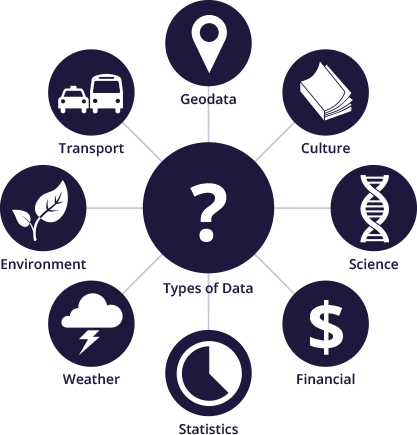Open Knowledge Foundation Blog: “Open data is data that can be freely used, shared and built-on by anyone, anywhere, for any purpose. This is the summary of the full Open Definition which the Open Knowledge Foundation created in 2005 to provide both a succinct explanation and a detailed definition of open data.
As the open data movement grows, and even more governments and organisations sign up to open data, it becomes ever more important that there is a clear and agreed definition for what “open data” means if we are to realise the full benefits of openness, and avoid the risks of creating incompatibility between projects and splintering the community.

Open can apply to information from any source and about any topic. Anyone can release their data under an open licence for free use by and benefit to the public. Although we may think mostly about government and public sector bodies releasing public information such as budgets or maps, or researchers sharing their results data and publications, any organisation can open information (corporations, universities, NGOs, startups, charities, community groups and individuals).

Read more about different kinds of data in our one page introduction to open data
There is open information in transport, science, products, education, sustainability, maps, legislation, libraries, economics, culture, development, business, design, finance …. So the explanation of what open means applies to all of these information sources and types. Open may also apply both to data – big data and small data – or to content, like images, text and music!
So here we set out clearly what open means, and why this agreed definition is vital for us to collaborate, share and scale as open data and open content grow and reach new communities.
As the open data movement grows, and even more governments and organisations sign up to open data, it becomes ever more important that there is a clear and agreed definition for what “open data” means if we are to realise the full benefits of openness, and avoid the risks of creating incompatibility between projects and splintering the community.

Open can apply to information from any source and about any topic. Anyone can release their data under an open licence for free use by and benefit to the public. Although we may think mostly about government and public sector bodies releasing public information such as budgets or maps, or researchers sharing their results data and publications, any organisation can open information (corporations, universities, NGOs, startups, charities, community groups and individuals).

Read more about different kinds of data in our one page introduction to open data
There is open information in transport, science, products, education, sustainability, maps, legislation, libraries, economics, culture, development, business, design, finance …. So the explanation of what open means applies to all of these information sources and types. Open may also apply both to data – big data and small data – or to content, like images, text and music!
So here we set out clearly what open means, and why this agreed definition is vital for us to collaborate, share and scale as open data and open content grow and reach new communities.
What is Open?
The full Open Definition provides a precise definition of what open data is. There are 2 important elements to openness:
- Legal openness: you must be allowed to get the data legally, to build on it, and to share it. Legal openness is usually provided by applying an appropriate (open) license which allows for free access to and reuse of the data, or by placing data into the public domain.
- Technical openness: there should be no technical barriers to using that data. For example, providing data as printouts on paper (or as tables in PDF documents) makes the information extremely difficult to work with. So the Open Definition has various requirements for “technical openness,” such as requiring that data be machine readable and available in bulk.”…
